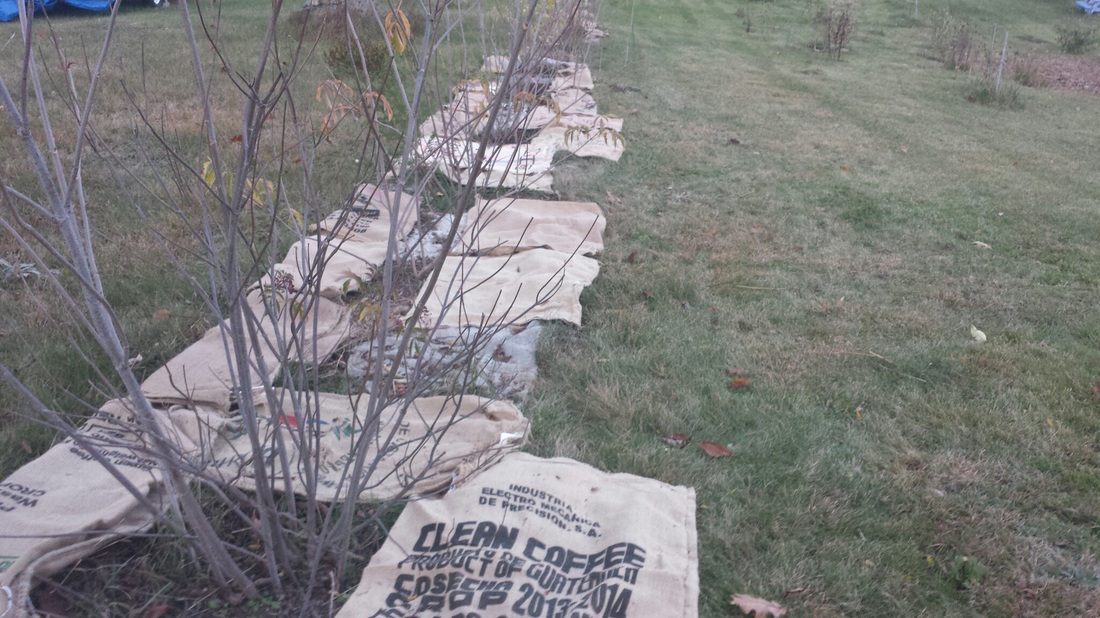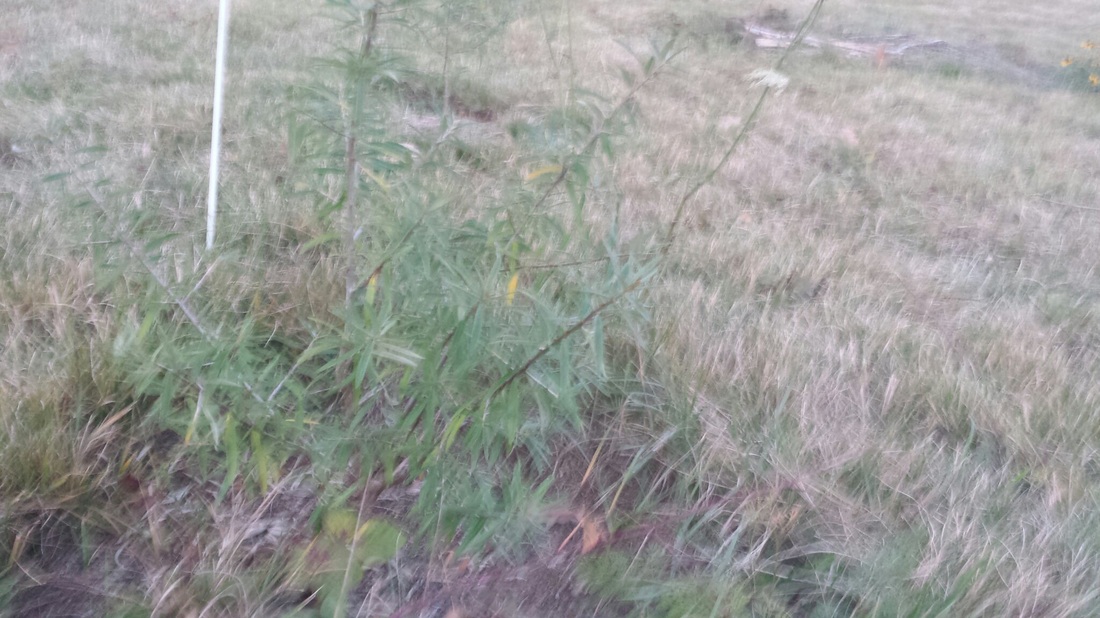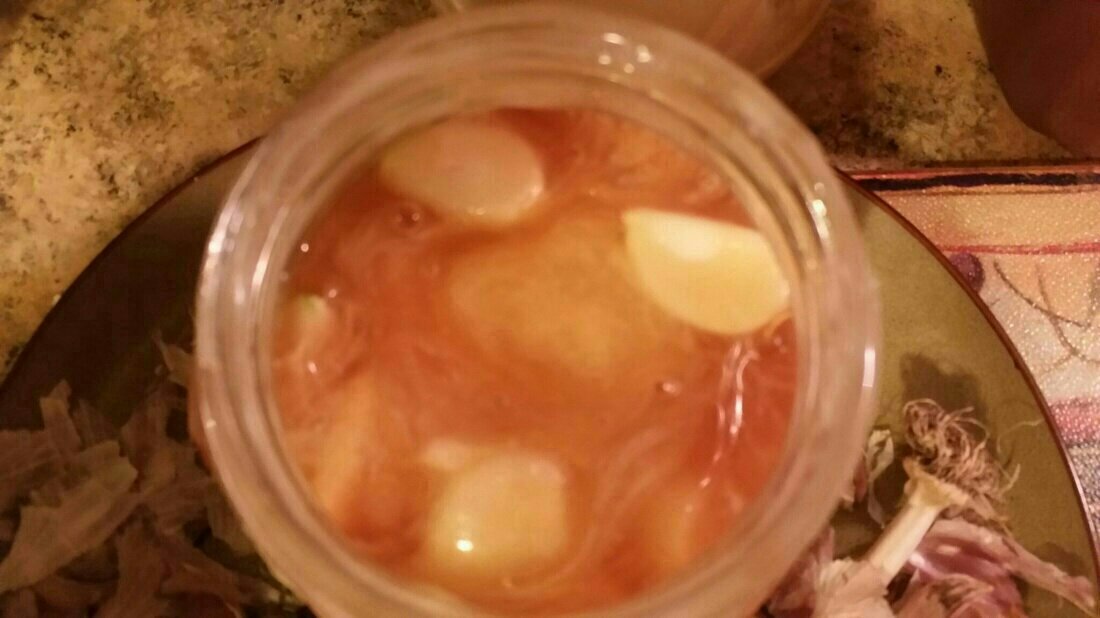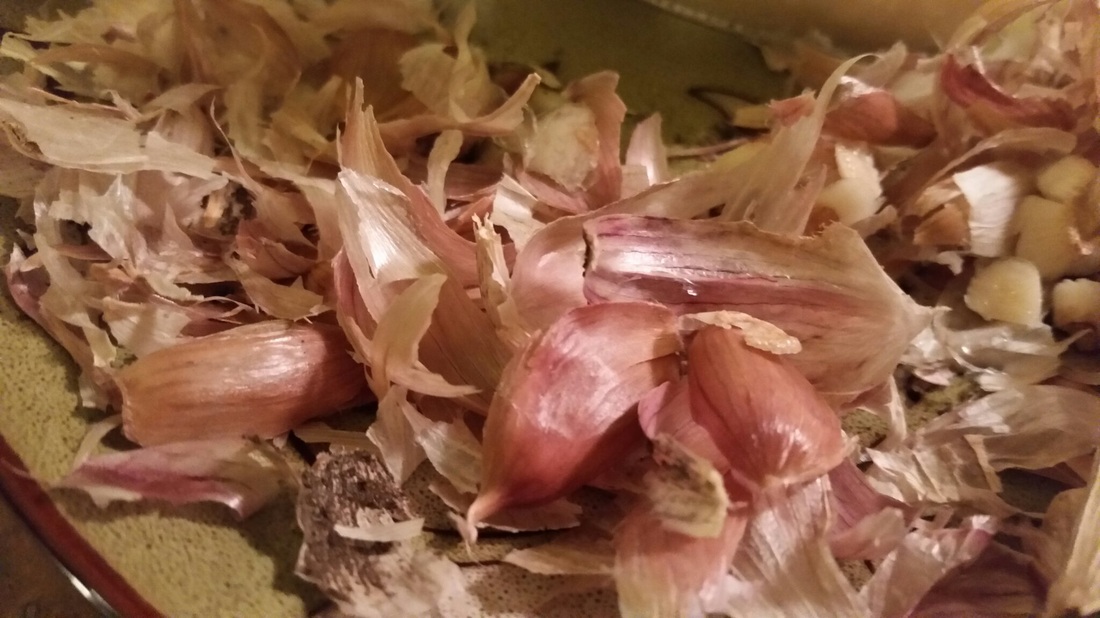|
We use coffee bags as a mulch, which is provided to us by a local and complefely organic coffee shop. The burlap has done wonders in keeping grass from overtaking our elderberries. Its very shallow root system don't appreciate any competition from the densely rooted and nutrient sucking grasses. The bags decompose in about three years, and need to be replaced every year or two. Can you say "recycling." lol. The hope is in 2016 the elderberries will form a true hedge and eliminate the need for us to cover the ground.
0 Comments
This is one of our Sea Berry/ Sea Buckthorn Trees, which we started from seed in late January. This year it's getting rooted in. The second year it's supposed to have much more growth. We'll see, but so far so good/happy. A family member fondly remembers all the wondrous virtuous of the "Sea Buckthorn" from her childhood through a young adult, while living in Russia. She shared and provided an introduction for us into this amazing tree. One of the ladies who currently manages Teal Farm in Vermont, refered to it as Sea Berry. She graciously gave us a tour of Teal Farm this summer, sharing with us the growing habits and many uses of the Sea Berry, as well as her vision of a change in direction for the United States agricultural system as we know it.
Recap and other "essentials" After dropping our little A off to her home, we were greeted with this in the back yard. Today we picked the few remaining elderberries that were still steadfastly clinging to their branches. It truly amazes me how much juice can be squeezed/extracted from these tiny dark purpled berries.
Walking through our orchard before the snow flies, I reflect on another growing season coming to an end. The Aronias seem pleased with the wheelbarrow-full of seaweed they each received when planted in the spring of 2013. There were two significant storms that spring that I took full advantage of. Following the storms my truck hauled several loads of these nutrient - laden ocean wonders to our orchard. I knew there was just enough seaweed for the voyage back to Snowfire Hollow, when the front of the truck lifted towards the sky at just the right angle. Make Fermented Honey Garlic! This recipe is a powerful home remedy for the cold and flu season which are bearing down upon us already this year.
Raw honey and raw garlic together in a jar. Then fermented! This process can be 3 days or more. Then storing the garlic in the refrigerator. The Yin and Yang of the taste bud world. The heat meets the sweet. In addition they are both so very good for you with the forces of health benefits packed inside. They are like two super-heroes possessing the supernatural powers to fight the bad guys. Garlic with it's list of crime-fighting skills; anti-fungal, anti-bacterial, anti-viral, anti-vampire and anti-microbial. All of these beasts, both microscopic and macro badness squashed, squelched and knocked-back by the superpower of allicin. My basic understanding is that the process starts with allinase, an enzyme, when crushed raw, releases allicin, a compound inside the clove, which is released just as the garlic is crushed. Once consumed, and as it is is digested, the allicin breaks down even further and begins to form several different organosulfur compounds. These compounds begin to take on the bad guys, and along with them are other healthy enforcer "allies" such as selenium, a mineral with antioxidant protection, protecting against free-radicals. There are also are cool carbs like , oligosaccharides, which have a couple of functions, one being it works as a type of pre-biotic in the digestive process. The amino-acid arginine, which has several purposes, such as aiding in the building proteins, relaxing blood vessels and promotes the healing of wounds. Arginine is stellar in that it is also anti-aging, provides over nearly 200 health benefits. According to a study from the University of Washington, garlic is has shown to be 100 times more effective than the 2 most popular antibiotics on the market. Honey. There are probably a million separate reasons to eat honey. Yes, it addresses the sweet tooth craving, but, it is the raw, unfiltered form, which is the only choice if you want good health and benefits. It is chock full of it's own arsenal of bacteria fighting properties, anti-microbial and antioxidant factors and a wealth of the first part of the alphabet of vitamins A, B- complex, C, D, E, and K . There are stores of minerals and trace elements: sulfur, phosphorus, iron, calcium, chlorine, potassium, sodium, iodine, copper manganese and the all-important, under-recognized magnesium. Bee Pollen and Propolis are also reputed to carry their own healthful positive effects for human consumption with the addition of amino acids and over 5000 enzymes, including amylase, an enzyme which helps breakdown carbohydrates. This, along with thousands of others found in raw honey, help the body to digest food. The fermentation of these two mother-earth given superfoods helps to give a delightful, tongue tripping zing to the honey, a sweet and pungent punch to the cloves. In addition, the fermentation process provides the multiplied benefits of live enzymatic and probiotic goodness for our out-of-whack guts, the body's inner eco-system, most commonly called the microbiome. HONEY GARLIC ingredients – garlic cloves, peeled, whole – raw honey
Eat often at the first sign of illness or sore throat, up to 3-4 cloves per day, spaced throughout the day. (Warn neighbors ,co-workers and small children if in the vicinity. To innoculate others, such as loved ones, against the overpowering odoriferous goodness, and boost their immune system, provide 1 or 2 cloves to them, too.) The cloves mellow as they age, and the honey makes for a nice asian-style flavoring for a topping, dressing, or cooked recipe ingredient. However, once heated above 110 degrees Fahrenheit, will lose the powerful, health benefits. Key Tips: Garlic loves to do the back stroke. It will not submerge. To keep your garlic coated, flip over two times a day in the beginning, as the fermenting will be fast and furious, especially in warmer weather. After that, 1 x a day should suffice, or when you remember. *(These are fermenter foodies' favorites as they allow for the slow release of the gasses which build up. Releasing the pressure is what keeps fermenting in glass safe, as exploding glass is dangerous.) The mason jar method is just a turn of the lid to allow the "pffffft" of the gas release, and then a quick close to keep out incoming air. ______________________________ Eating fermented honey garlic is a personal choice, as is eating and producing of fermented food. The book, The Art of Fermentation, and meeting the world-reknowned author Sandor Katz, was a highlight of the Common Ground Fair in 2013. We had started to experiment with sauerkraut, using our own home-grown cabbages. We are making our way through other interesting ferments, for all the purported health benefits not to mention the far-out flavorings. WARNING: If you have an infant, please do not feed them honey, raw of otherwise. The most common cause of infant botulism is eating honey or corn syrup during the first 12 months of life. You can follow this link to the Mayo Clinic for more information on infant botulism. |
AuthorI am T- the other half -of the dream-wrangler team, in the Orchard adventure. Categories |
|





 RSS Feed
RSS Feed